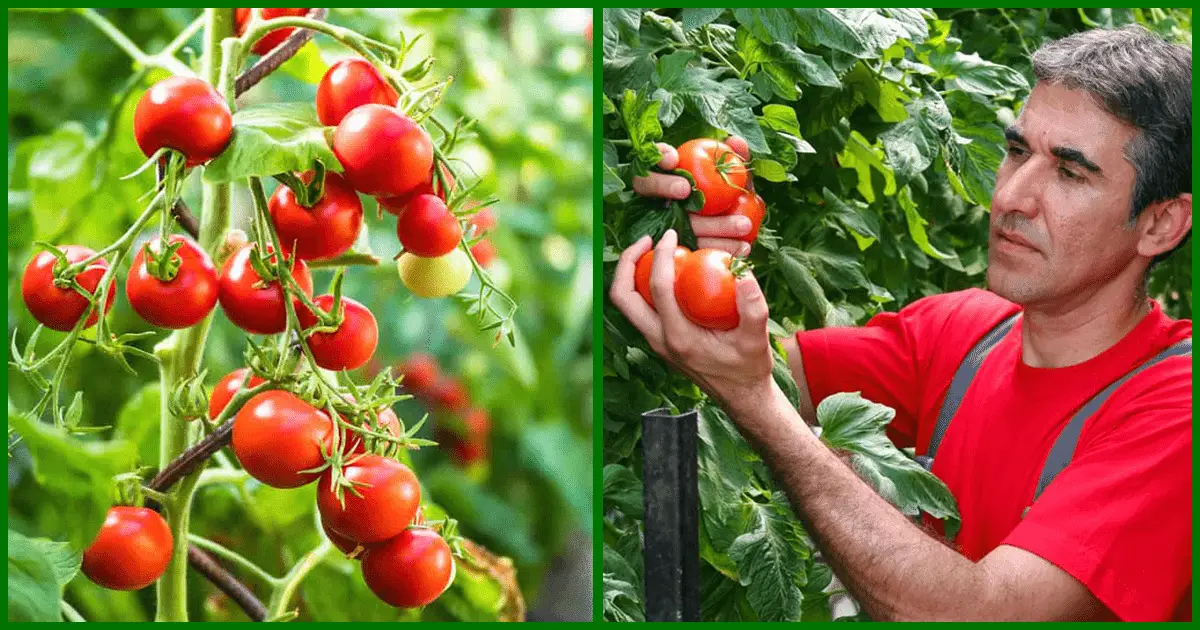Blueberries are the go-to healthy fruit. They’re packed full of nutrition and antioxidants and can complement snacks, desserts, and smoothies. What’s not to love?
However, buying blueberries from the store can become costly, and prices are on the rise. But there is another option. Have you ever thought about growing a blueberry bush in your yard?
Not only will bushes reward you with a full crop year after year, but they’re also beautiful to watch throughout the growing season.
The leaves and buds reappear in early spring — bees bumbling along as pollinators, followed by the purple berries. As fall approaches, the leaves take on a magnificent red color in preparation for a long winter’s sleep.
You could plant one and watch it grow from seed or pay a little more for a bush that is all ready to bear fruit. Although blueberries are not challenging to grow, they have their own set of needs, which will give you a fantastic yield if followed.
So if that’s what you’re after, here are 8 secrets to a successful blueberry harvest.
1. Go Ericaceous
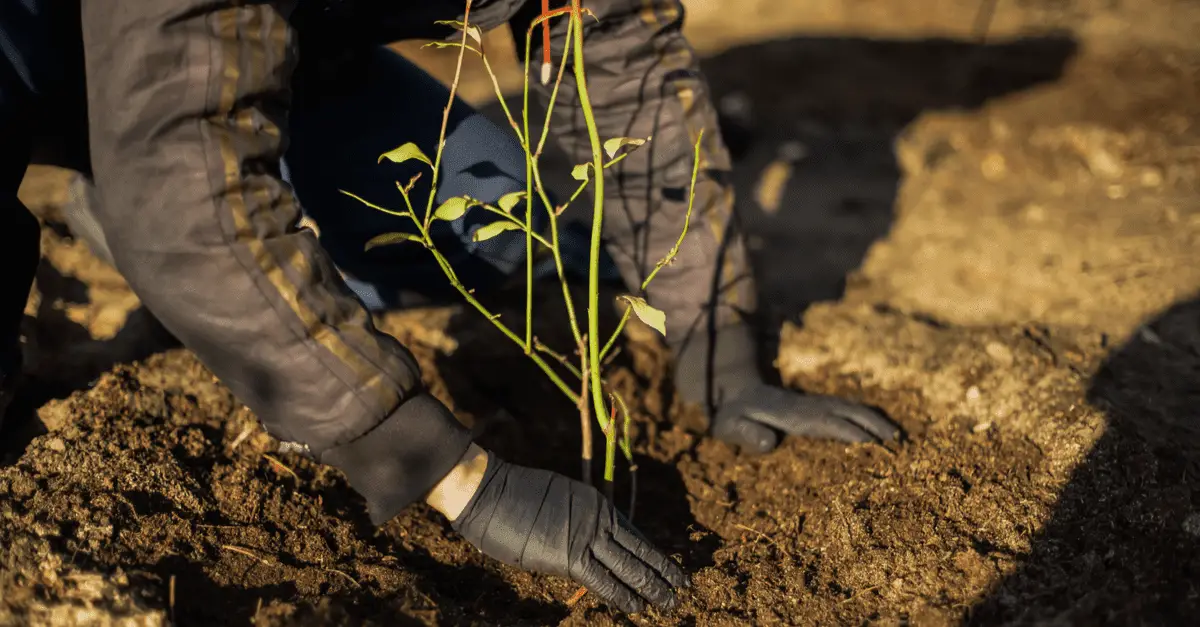
The first and most commonly known fact about blueberry bushes is that they need to be in acidic soil with a PH of between 4.5 and 5.5. If you’re planning on planting your bush in the ground, you’ll need to check this first; otherwise, you’re on a slippery slope to a weak plant and little fruit to show for your purchase.
If you have neutral or more alkaline soil, then growing in a container or growing in a pot within the ground is your option. Use ericaceous compost, and for the best outcome, repot every 12 months.
2. Sun

You may have heard that unless you position your blueberry bush somewhere that you could get sunburned, your blueberries won’t grow. Although these shrubs are sun worshipers, they will still give you fruit if you live in a slightly cooler climate.
However, for the best harvest, your bush can produce, try to find as much sun as possible. Ideally, they need at least 8 hours of full sun a day. Partial shade will just mean your bush won’t grow quite so many buds and, therefore, produce fewer berries.
There isn’t just one type of blueberry bush, so spend some time researching which variety is perfect for your patch.
3. Invest In Two

Different varieties of blueberry bush have different pollinating needs. Some, such as Brightwell and Sharpblue, require another blueberry bush to cross-pollinate – meaning they need an insect, such as a bee, to take the pollen from one blueberry plant to another; otherwise, they can’t bear fruit.
Others, such as Highbush varieties, are self-fertilizing, which means you only need one bush. In these cases, your plant will produce some fruit; even though they can do this, your bounty will be much juicier, more sizable, and abundant with two or three plants that can cross-pollinate.
4. Use Rainwater
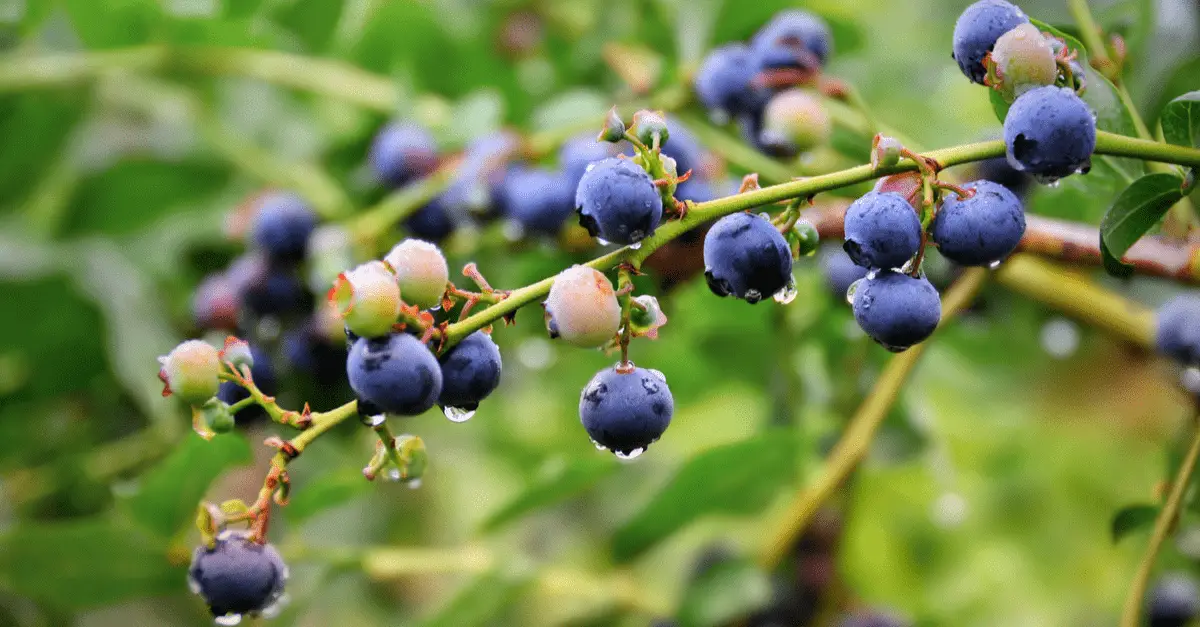
Blueberries can be a little fussy when it comes to their drinking water, and it is all to do with their PH level. As we know, blueberries love acidic conditions, and using rainwater allows these levels to remain consistent.
Tap water, however, will begin to raise the PH level making the soil more alkaline, something blueberries just won’t tolerate. If, however, you’re experiencing drought in your area, then ultimately, any water is best.
5. Keep Them Moist
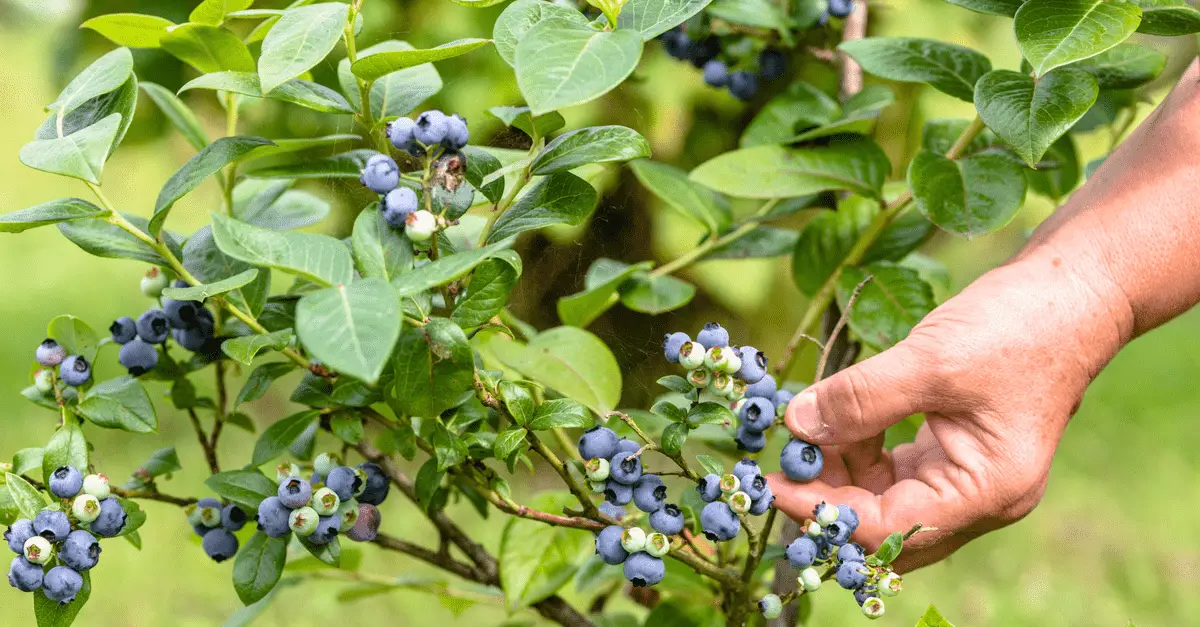
While we’re on the subject of water, blueberries need to be moist. Your climate will determine how often you’ll need to water them.
Those grown in pots in hotter climates will naturally require more. Young blueberry bushes and bushes producing fruit also need extra watering care.
Make sure your pot or ground has excellent drainage. Overwatering and keeping your plant wet will eventually kill it. The leaves of your bush will begin to brown, which is due to the waterlogged roots not being able to absorb any nutrients.
A great way to maintain moisture in the soil is to mulch around the base of your bush. Mulch acts as a barrier, insulator, and protector of the earth, and placing some around your blueberry bush will reduce moisture evaporating.
Materials such as woodchips and grass cuttings work very well as mulch.
6. Winter Pruning
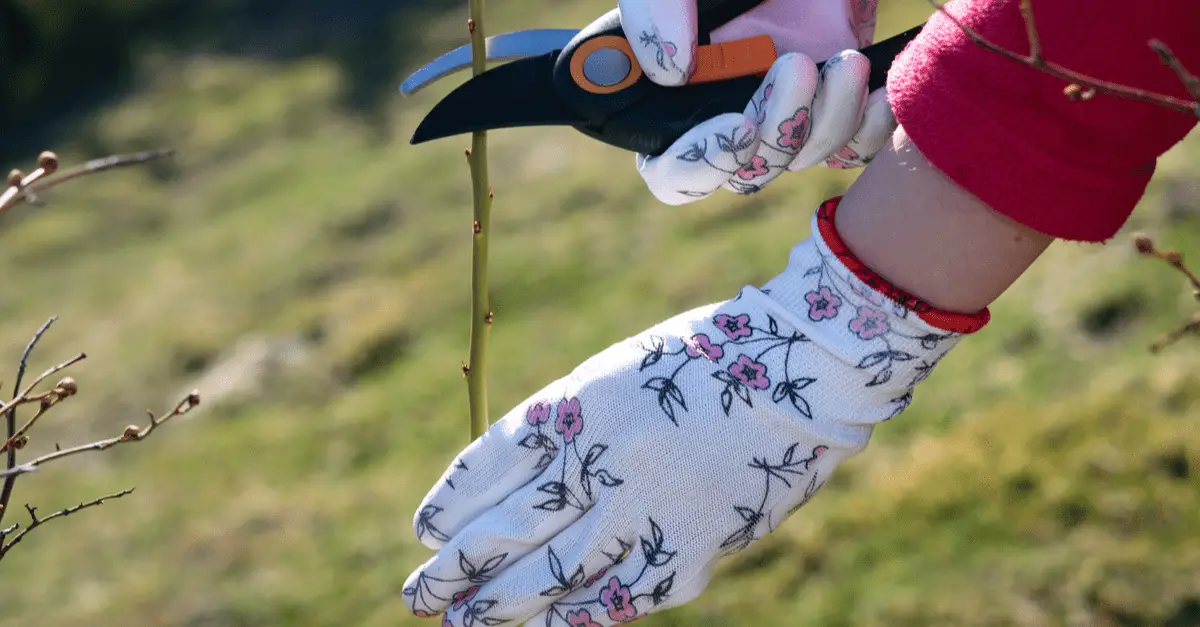
While it’s best not to prune your blueberry bush in the first couple of years while it’s maturing, your plant will eventually need a good cut back for a successful harvest.
When a blueberry bush grows, it produces stems and shoots from those stems, and it is there that your blueberries will grow. It’s essential to encourage as many sides to shoot to boost your harvest as much as possible.
Unpruned blueberry bushes tend to become thick and woody, and the stems that have produced fruit before will stop. Cutting back these older stems will invite more shoots to grow and end in a more successful yield.
Blueberry bushes are happy with a trim anytime during their dormant period – between November and March; however, if you wait until the end of winter, it’s easier to see whether you’re cutting a leaf or a bud.
It’s best not to prune in the summer because you may encourage new leaves to grow that will not be mature enough to survive the winter.
7. Patience
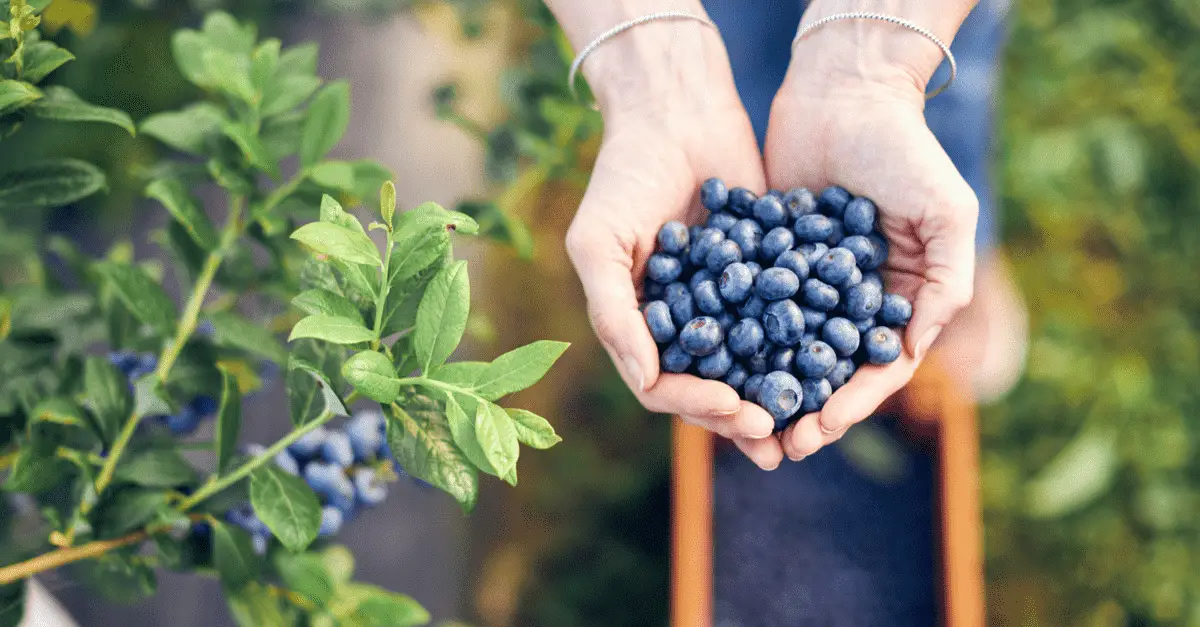
Depending on how you go about obtaining a blueberry bush, you’ll likely need a fair deal of patience.
Blueberry bushes take at least three years to start growing fruit, and even then, it’s likely to be a small crop with few berries. You’ll notice a more plentiful and reliable harvest at around four years.
Patience also comes in handy during harvest time. Picking too early will spoil the fruit and leave you without the harvest you’ve strived for.
Blueberries should be ready in late summer, with berries that are deep purple and almost black, and they should pull away easily. If you run your hand over the bush, you may find some fall off, so make sure to have your basket ready!
8. Protect Them
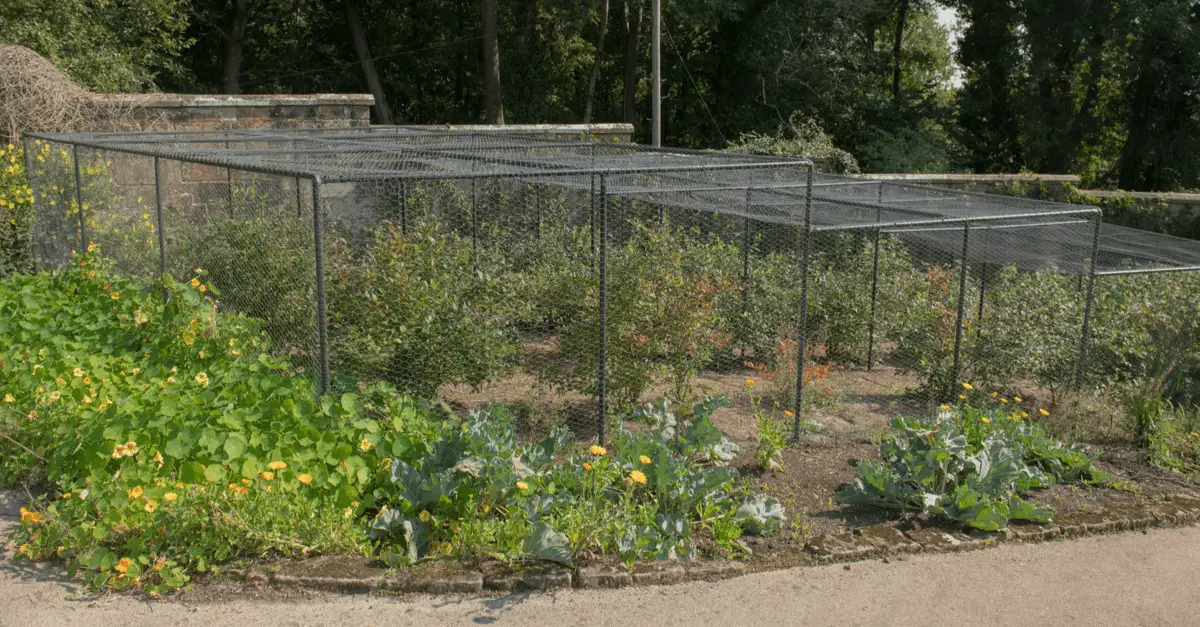
Lastly, blueberries are delicious for humans, but they’re also delectable to birds, who will be trying to fill up before the winter arrives.
If you want to keep all the berries to yourself, then make sure you protect them with a cage and netting, but let nature takes its course if you’re happy to share.



